Myanmar Earthquake, one of the largest disaster of its history, a massive 7.7 magnitude earthquake hits the boundary of Myanmar, resulting lots of building and structures are collapsed, tilted or facing a catastrophic failure.
Many videos and images of building collapses have gone viral, especially the catastrophic failure of a tall building in Bangkok, which collapsed within a few minutes. Numerous other collapses and structural failures also occurred during the Myanmar earthquake.
Basically this article includes concepts of structural failure due to earthquake and its preventing tips by taking examples of buildings collapse during Myanmar earthquake. This article shows the reason of failure with their preventive measures.
This article primarily covers the concepts of structural failure due to earthquakes and provides prevention tips, using examples of building collapses during the Myanmar earthquake. It explains the reasons for the failures along with their preventive measures.
Table of Contents
Myanmar Earthquake Overview
An earthquake with its epicenter located 16 km away from the Myanmar city of Sagaing having a magnitude of 7.7, making it the second strongest earthquake in Myanmar’s history.
The earthquake struck the city on Friday (28-03-2025) at 12:50 PM, and just 12 minutes later, an aftershock with a magnitude of 6.6 followed.
| Date & Time | 28/03/2025 (12:50 PM) |
| Magnitude | 7.7 & 6.5 |
| Epicenter | 16KM away from Sagaing, Myanmar |
| Affected Region | Myanmar, Thailand, China |
| Casualties & Injuries | 2000+ death, 3,400+ injuries, many trapped or missing |
| Major Structural Damages | Bridges, buildings, pagodas, and infrastructure collapses |
During this earthquake, a large number of structures collapsed or tilted. One such example is the Sky Villa Condominium building, located in Myanmar, which suffered significant structural damage.
Sky Villa Condominium Building Collapse
Sky Villa Condominium is a residential building with a G+10 storey. It has a simple rectangular shape. The ground floor includes parking and some commercial shops, while the upper floors are dedicated to residential accommodation.
This image shows the before and after condition of building.
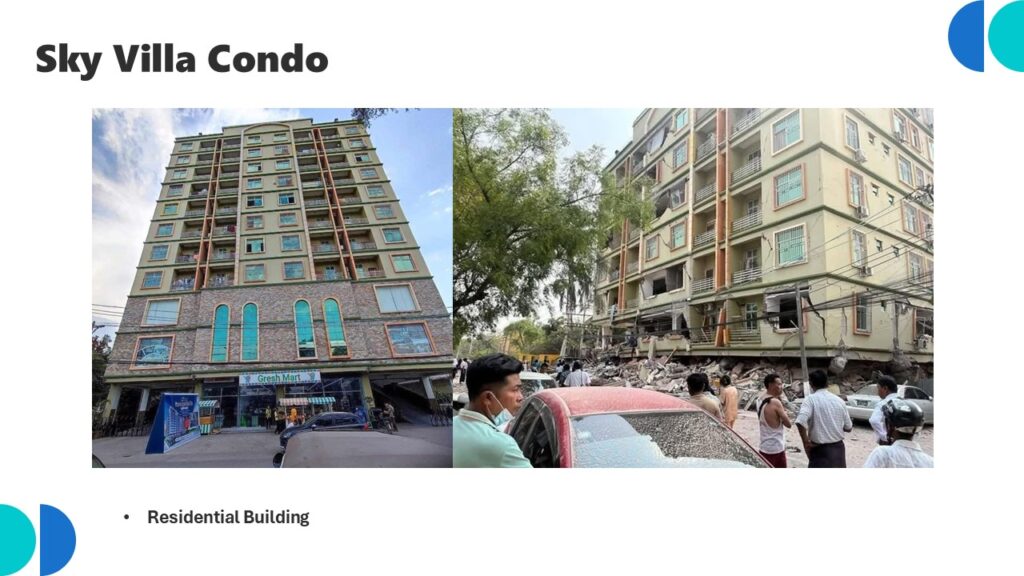
In the next image, you can see major cracks appearing around the openings, following a similar pattern throughout the structure.
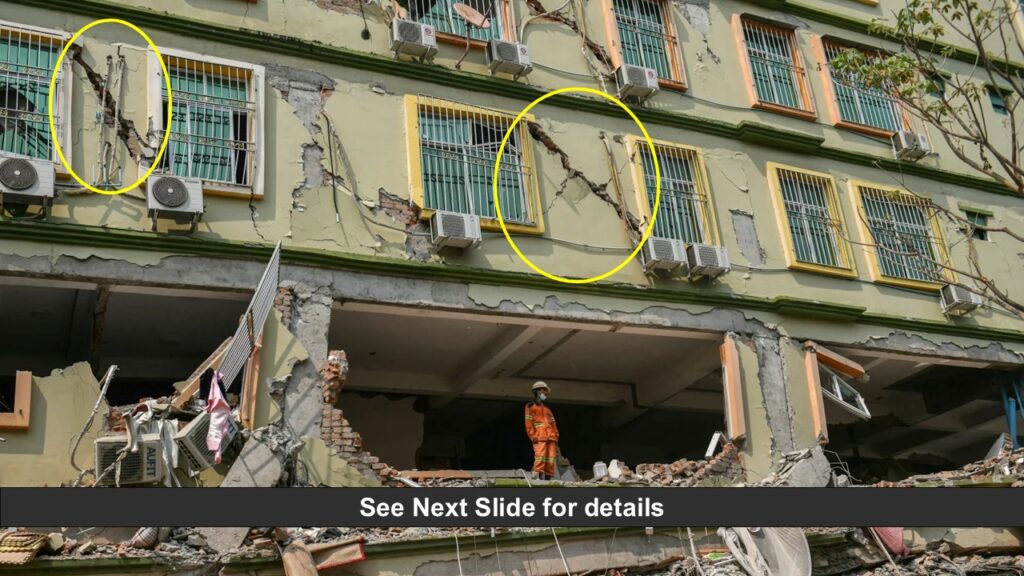
These cracks are known as X-cracking, a common type of damage observed in brick masonry during earthquakes. X-cracking typically appears on walls with large openings and is caused by insufficient vertical reinforcement around the openings.

During an earthquake, a wall is typically divided into three different parts, as shown in the figure. The uppermost part of the wall, located above the lintel, is known as spandrel masonry and usually has good stiffness. The lower part of the wall, below the sill level, is referred to as sill masonry. The middle portion of the wall, between the lintel and sill, is called the wall pier masonry.
During an earthquake, due to the sway of the building, these wall segments behave differently and move as discrete units. These sub-parts of the masonry rock back and forth, making contact only at opposite corners, as shown in the figure. This rocking action of the masonry leads to the development of X-cracking in the walls.
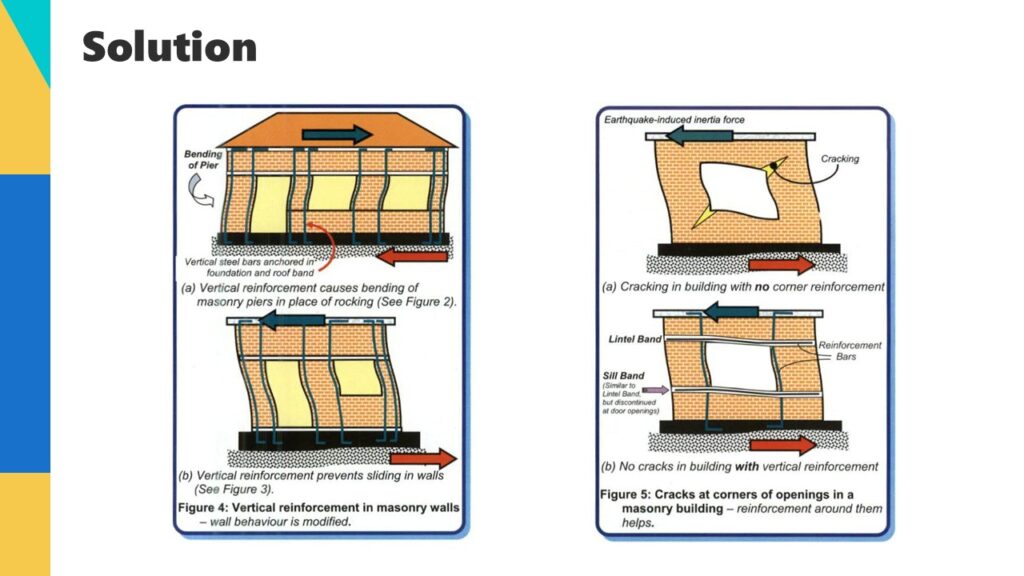
To avoid such damage in masonry, it is essential to providing vertical reinforcement in wall around the openings, as shown in the figure. Additionally, the proper provision of lintel bands and sill bands helps to protect masonry wall structures from earthquake.
In the next image, you can see three other major structural damages in the building, commonly caused by earthquakes. These types of damages occur primarily due to inadequate consideration of seismic design & detailing in the structure.
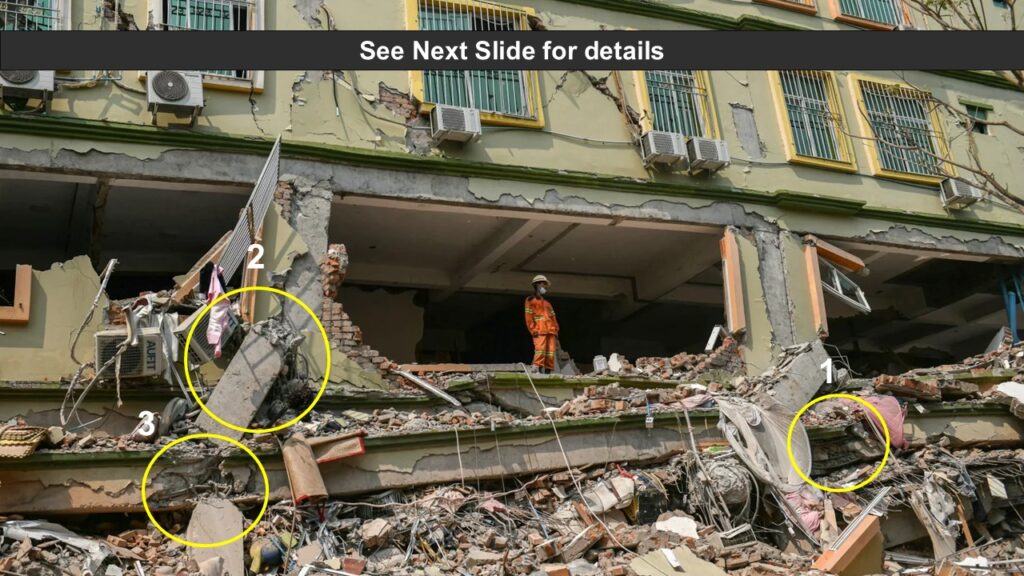
If you observe closely, you will notice insufficient stirrups and a lack of confining zone reinforcement in the beam at Location 1. At Location 2, the column has failed at its mid-span, which may have occurred due to high axial or shear stress. Meanwhile, at Location 3, the column-beam joint has failed due to inadequate seismic design considerations.
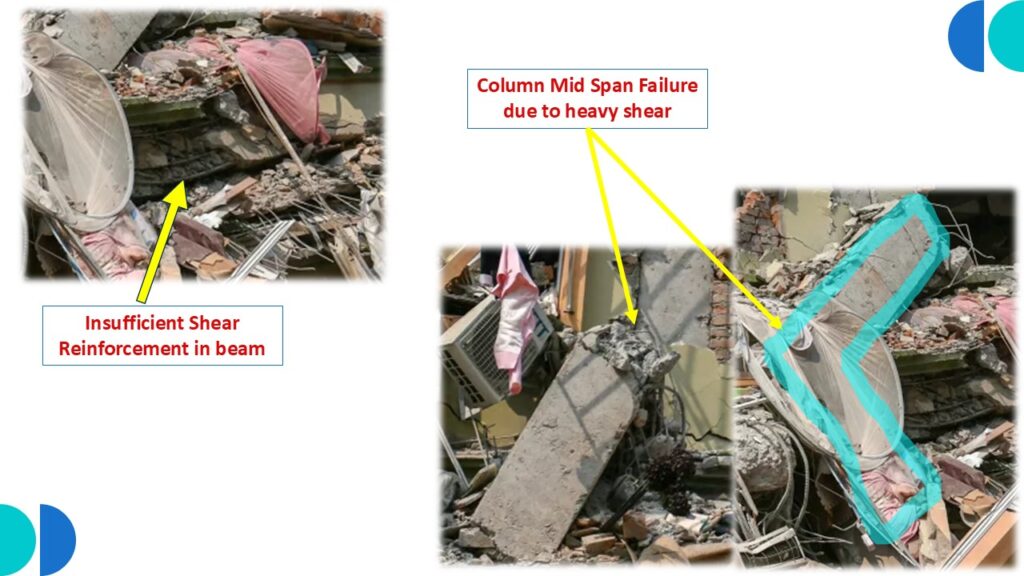
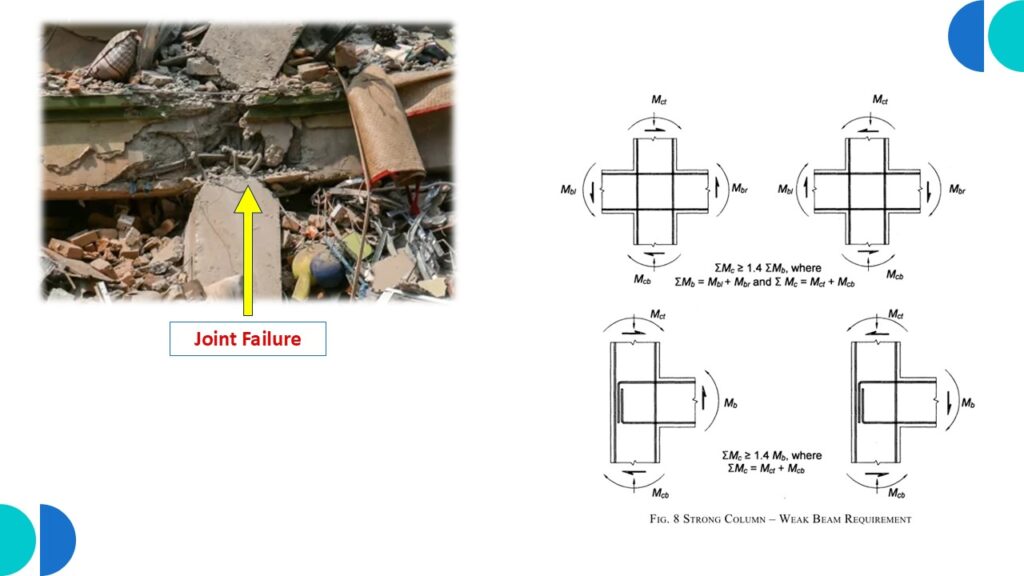
The joint is one of the most critical points in a structure during an earthquake. That’s why both American and Indian standards include special recommendations for joint checks. In seismic-prone areas, it is mandatory to ensure that column-beam joints meet seismic design requirements. Additionally, the reinforcement detailing must follow ductile detailing practices to enhance the structure’s earthquake resistance.
In India, ductile detailing for buildings and RCC structures is carried out as per IS 13920:2016, the code of practice for ductile design and detailing of reinforced concrete structures subjected to seismic forces.
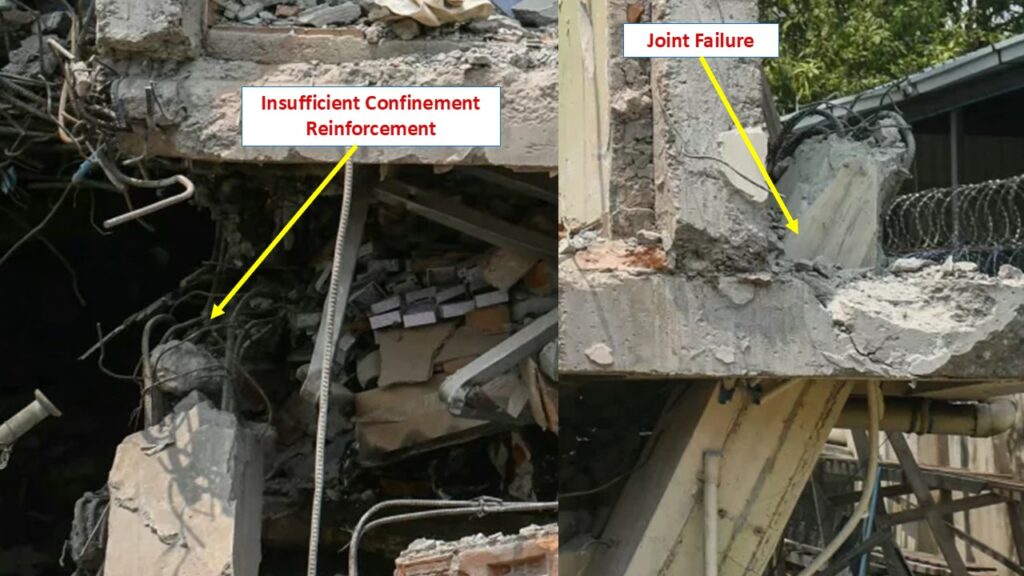
In Myanmar, lots of buildings are collapsed due to massive earthquake, and you find the similar problem in each and every building. Especially the problem of insufficient confinement reinforcement and diameter of stirrups which looks likes just a thin binding wire.
I’m not fully aware of what the Myanmar building design codes recommend, but based on my initial observation, the stirrup detailing appears to be very light and inadequate when compared to the demands of such a massive earthquake.
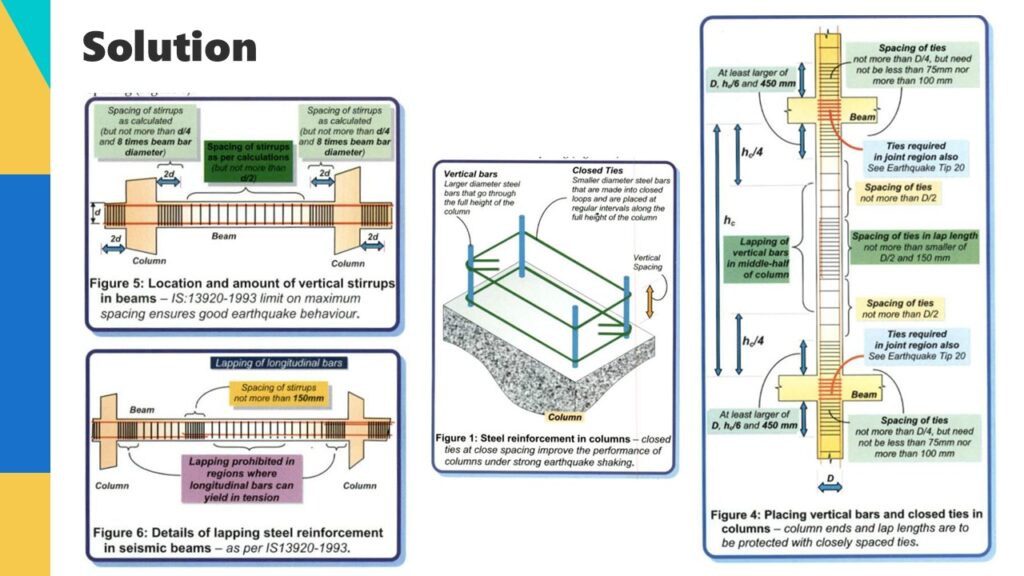
Seismic damages in buildings, such as joint failures and mid-span failures in beams and columns, can be avoided by adopting proper ductile detailing and conducting accurate seismic analysis of the structural frame.
In the next image, you can see that the bottom storey of the Sky Villa Condominium has completely collapsed, while the upper storeys (above the G+2 level) remain mostly same, with no significant damage observed in that portion.
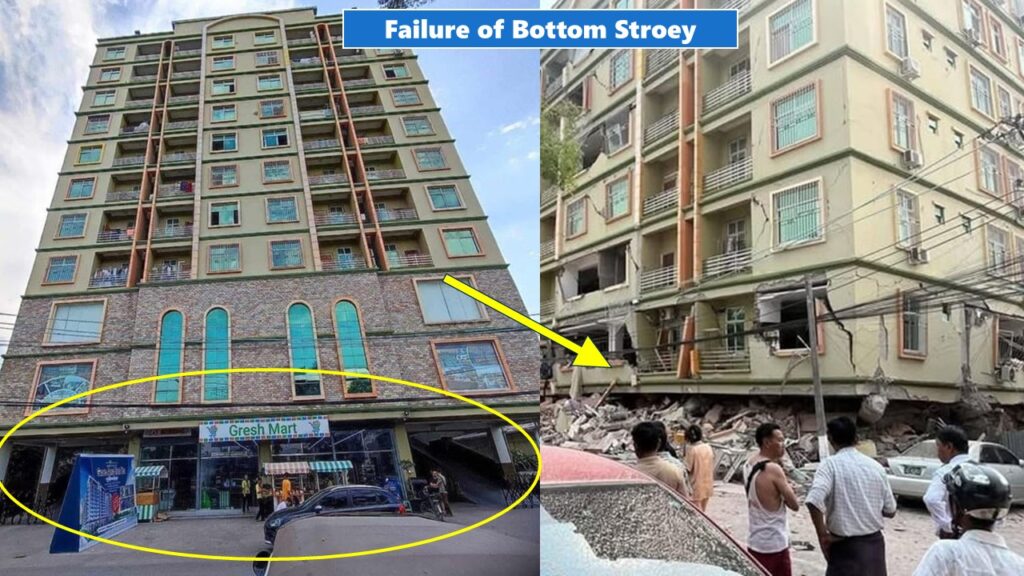
Such failure of the bottom storey occurs due to insufficient stiffness of storey to resist earthquake forces. In many apartments or tall buildings, the ground floor is typically used for vehicle parking, while the upper storeys are used for residential accommodation.
As a result, the upper storeys have more internal and peripheral walls, which contribute to greater stiffness and better resistance against seismic forces. Whereas the bottom storey don’t have any internal and peripheral wall which results less stiffness of storey.
If the stiffness of the bottom storey is significantly less than that of the storeys above, it is referred to as a weak or soft storey. During an earthquake, the soft storey experiences much higher deformation compared to the other storeys, which can ultimately lead to its collapse. This is exactly what happened in the case of the Sky Villa Condominium.
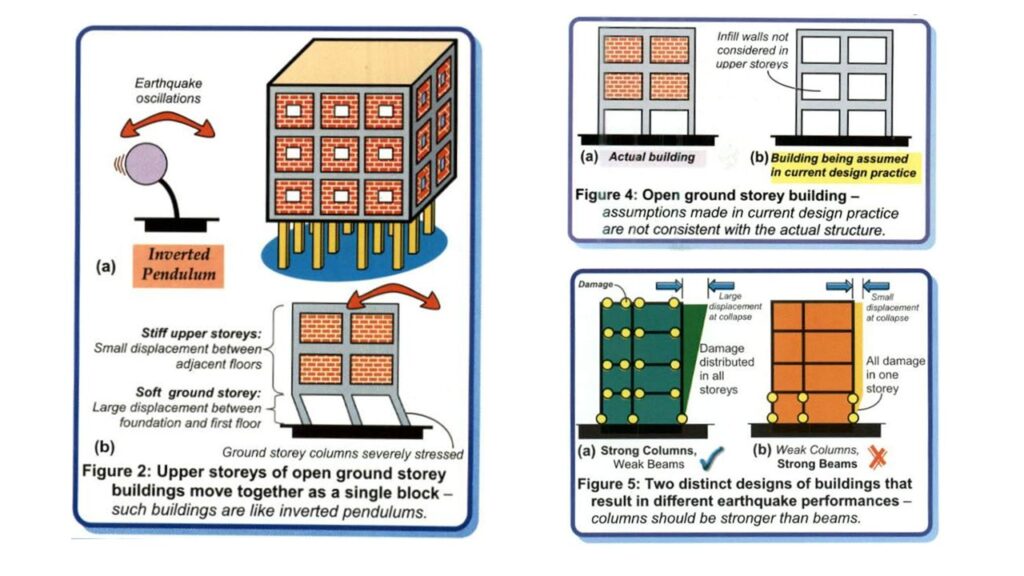
To avoid such failures, infill walls can be provided at the bottom storey to enhance stiffness. However, in most cases, the bottom storey of tall buildings is used for parking, due to which the provision of wall at bottom storey is not looks practical.
In such situations, the building should be designed using the ‘strong column–weak beam’ concept to ensure better seismic performance. Additionally, shear walls should be provided at appropriate locations to maintain sufficient stiffness at the ground storey.
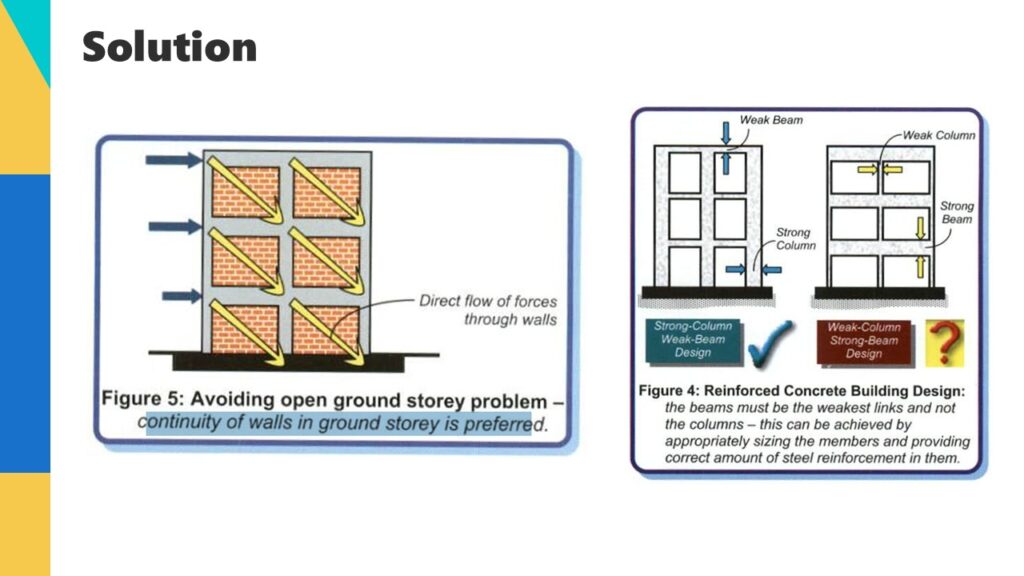
I hope this study is useful for you. If you get any value from this content than please share it with your friends and colleagues.

